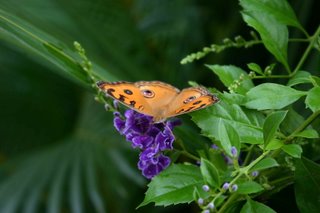Pyrops candelaria

This specimen is of the Order Hemiptera, Family Fulgoridae. Fulgorids are variously referred to as Lantern Flies, or Lantern Bugs. In Lao, the local name means 'elephant insect.'
Like most Hemipterans, Fulgorids are herbivourous, feeding on plant juices. I want to go more in depth into this in the future, but it is worth mentioning here the relationship between many sap-feeding Hemipterans and ants.
Due to the low-amino acid (building blocks of proteins which are vital for insect development) content of plant sap, sap-feeders (or phloem feeders) must consume large quanitites of the sugar-rich plant phloem in order to obtain sufficient amino acids. As the sheer quantity of this sugar water surpasses energy requirements of the insects, they secrete the excess as honeydew. This honeydew is typically high in sugars and nitrogen. Ants will very often care for phloem feeders, protecting them from predators and even inclement weather in order to harvest this honeydew. The relationship is really very much like humans and dairy cows.
The relationship is more commonly seen between ants and aphids, although it is a quite common association.
This specimen is a member of the species Pyrops candelaria, which is common in Laos and Thailand.







